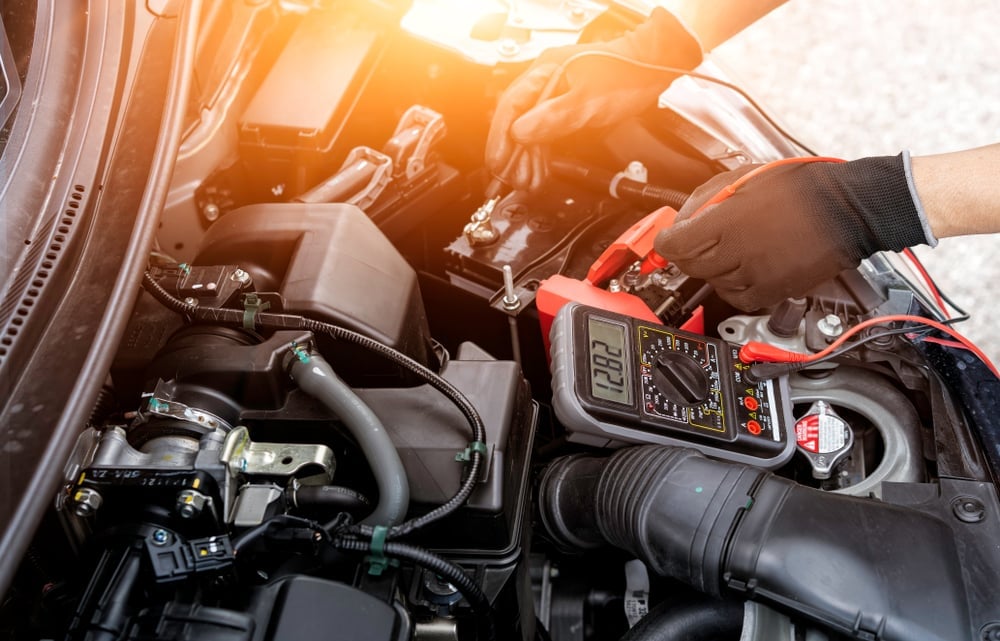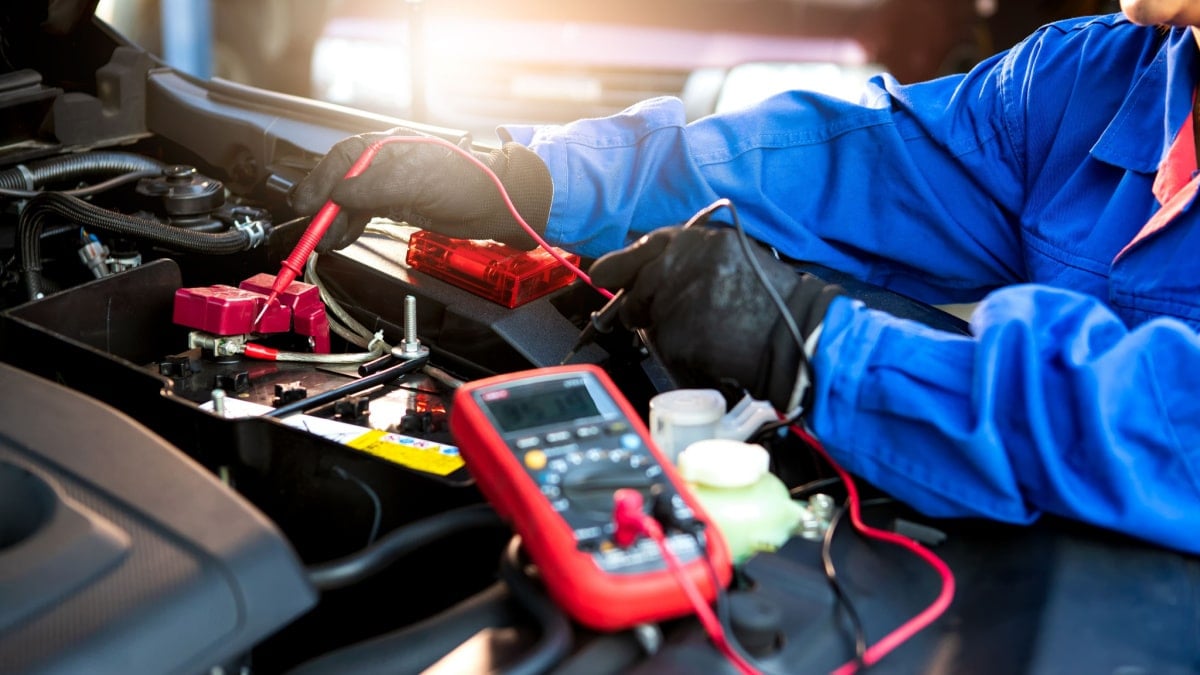It’s everyone’s worst nightmare – you head out to work in the morning, and the car won’t start. You are facing a dead battery, but what caused it, and how could it have been prevented?
I look at eight things that can drain your car battery, some of which might take you by surprise. I also look at ways to diagnose the drain and how to prevent it from happening again. Let’s begin with the most common reasons:
8 Causes of a Drained Car Battery
The most common reason a car battery is draining is a parasitic drain caused by a faulty electric consumer, like a bad door lock switch or a trunk lock switch. It can also be caused by a broken alternator or human error, like forgetting electric consumers on.
Any one of these issues can cause your car battery to die, leaving you stranded without a ride. Here’s a more detailed list of the possible things that could drain your car battery:
1. Human Error

We’ve all been there. You pull into the driveway at the end of a long day and head inside without turning off the headlights. You may also have forgotten to close a door or the trunk all the way.
While these lights run overnight, your car battery drains with nothing to recharge it. That’s why the car won’t turn over in the morning.
Some newer cars have alert systems to remind you when the lights are on or a door is open. If you don’t have one of these, it’s important to remain vigilant against these common errors.
2. Poor Charging

When the charging system fails to work, the battery drains, even while you drive. When everything is running the way it should, the battery is recharged during the trip.
However, any loose belt to the alternator or worn-out tensioner can cause the system to stop charging, and you wouldn’t even know it’s occurring.
RELATED: 6 Causes of an Alternator Not Charging
3. Parasitic Drain

A parasitic drain occurs when something in the vehicle continues to run even though you have turned the car off. There are some components that are always using battery power, such as the memory for the clock or radio presets.
However, when an electrical problem occurs, the parasitic drain might exceed what is normal. These drains occur due to defective fuses or faulty wiring. Here is a list of common causes of a drained car battery by parasitic drain:
- Faulty Door Light Switch
- Faulty Door lock actuator (integrated light switch)
- Trunk lock switch
- Faulty car stereo or the wirings to it.
- Any aftermarket electrical parts were installed incorrectly.
There could be many more difficult reasons for this. But these are the most common causes. A faulty door light switch is an especially common culprit – it will let the lights in the car stay on and drain the battery.
4. Extreme Temperatures

Your car battery doesn’t handle extremes well. If the temperature dips below 10 degrees Fahrenheit or exceeds 100 degrees Fahrenheit, the battery can suffer.
Lead sulfate crystals begin to build-up, which leads to long-term depletion. Plus, this build-up makes it more difficult to charge the battery completely.
5. Broken Alternator

The alternator is responsible for charging the battery. It also helps power the electrical systems in the car.
When the alternator goes bad, the battery cannot recharge. The typical alternator will last about seven years or between 100,000 and 150,000 miles.
RELATED: 6 Symptoms of a Bad Alternator
6. Loose or Corroded Battery Connections

Even if the alternator is working correctly, it can be difficult to get a full charge if the battery connections are loose or corroded.
It doesn’t hurt to do a regular inspection of the cables and terminals to ensure everything is clean and connected.
7. Taking Short Drives
The alternator needs time to charge the battery. If you only drive down the street to visit the local grocery store, you aren’t allowing the alternator to work.
Ideally, you want to take longer drives, preferably on the highway for a full charge to occur.
8. Old Car Battery
Sometimes, the battery simply becomes too weak and old to hold a charge. In normal conditions, the car battery can last between three and five years.
However, if you drive in extreme temperatures or push your vehicle to its limits, you might go through batteries more often.
Diagnose Drained Car Battery

So, what’s causing your battery to drain and how can you fix it? If you made a mistake and left something running, your cause is fairly obvious. A quick inspection can also indicate if you have loose or corroded connections.
However, it can be much more difficult to find a parasitic drain. Follow these steps to find the culprit.
Connect a Multimeter
Turn off all the devices in the car and make sure you have a fully charged battery ready to go. Set your multimeter up to the highest AMP setting and connect it to the battery.
If you receive a reading of more than 50 milliamps, there is a parasitic draw on the battery. Your clock and other common equipment that runs on the battery should read between 20 and 50 milliamps.
Check the Fuses
Pull out one fuse at a time while monitoring the multimeter. It helps to start with the lowest amperage and move up.
If you pull out a fuse that causes the reading to drop significantly, you’ve found the culprit. Consult the fuse chart in your owner’s manual to determine what component is causing your problems.
From here, you will probably need to do a little more investigating. Let’s say the fuse runs your audio system – you still have to figure out if the radio, power antenna or other device is drawing power.
In this situation, you will unplug each device running on that fuse until you see the power draw stop. That’s your offending component.
Repair the Issue
Once you know what part is draining the battery, it’s time for a replacement. Some parts will be easy to repair, and others might require the help of a mechanic.
Once you replace the defective part, run the multimeter test again to assure the draw has ceased.
Preventing a Drain on the Car Battery
Proper car battery maintenance ensures your vehicle is already ready to go. You can prevent the battery from draining by following these simple tips.
- Remove any debris or dirt regularly. Don’t let the top of the battery get dirty or corroded.
- Check battery cables and terminals often for a secure connection.
- Don’t use electrical devices when the engine isn’t running. Turn on the car if you want to run the radio or other accessories.
- Ensure your car battery is securely clamped down. Vibrations can lead to shorter battery life.
- Park in a garage, away from the elements.
- Use a battery blanket when the weather gets cold.
- Take longer drives.
With a few maintenance steps, you won’t have to be late for work again.
Categories: Car Battery, Electric, Troubleshooting















